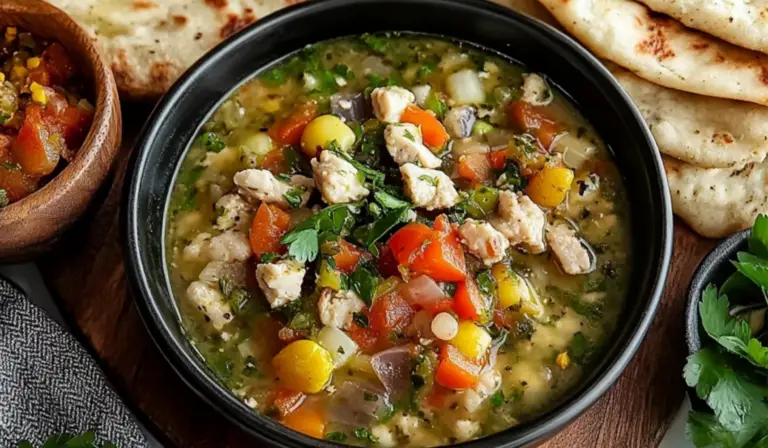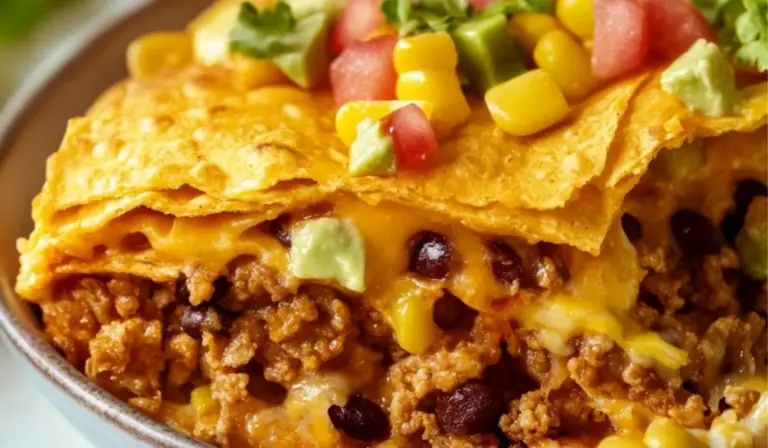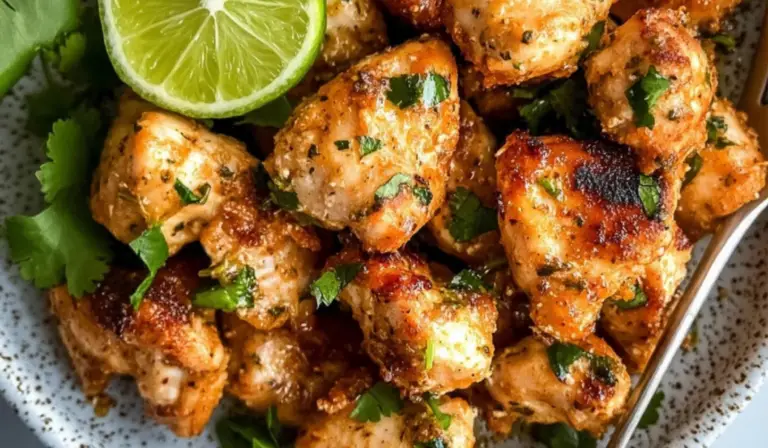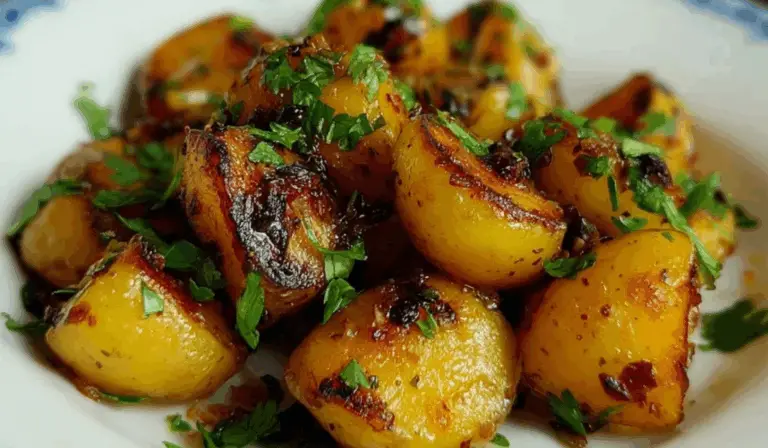The Ultimate Beginner’s Guide to Making Pollo Asado
There’s something special about the aroma of grilled chicken infused with vibrant citrus, warm spices, and smoky achiote. Pollo Asado, a beloved dish in Mexican and Latin American cuisine, delivers bold flavors with minimal effort, making it the perfect recipe for beginner cooks. Whether you’re firing up the grill or roasting it in the oven, this dish is an excellent introduction to marinating and cooking chicken to juicy perfection.
PrintThe Ultimate Beginner’s Guide to Making Pollo Asado
Pollo Asado is a mouthwatering Mexican dish featuring chicken marinated in a bold blend of citrus, garlic, and smoky spices, then grilled to perfection. This beginner-friendly recipe delivers tender, juicy chicken with an irresistible charred crust! 🍗🔥🍊
- Prep Time: 10 minutes
- Cook Time: 40 minutes
- Total Time: 50 minutes
- Yield: 6 servings 1x
Ingredients
Marinade Ingredients
- ½ cup orange juice
- ¼ cup lime juice
- 3 tablespoons olive oil
- 3–4 garlic cloves, minced (or 1 tablespoon garlic paste)
- 1 tablespoon achiote powder (or achiote paste)
- 1 teaspoon ground cumin
- 1 teaspoon ground coriander
- 1 teaspoon dried oregano (Mexican oregano preferred)
- 2 teaspoons sea salt or kosher salt
- ½ teaspoon ground black pepper
Chicken Options
- 3 pounds of chicken thighs, legs, and/or breast (bone-in or boneless, skin-on or skinless)
Serving Garnishes (Optional)
- Lime wedges
- Chopped cilantro
Instructions
Step 1: Make the Marinade
In a large resealable plastic bag or a mixing bowl, combine the orange juice, lime juice, olive oil, minced garlic, achiote powder, cumin, coriander, oregano, salt, and black pepper. Stir well to ensure all ingredients are evenly mixed. If using achiote paste, break it up with a spoon or whisk to incorporate it fully into the marinade.
Step 2: Marinate the Chicken
Place the chicken pieces in the bag or bowl with the marinade. If using a resealable bag, close it and gently massage the chicken to coat it thoroughly. If using a bowl, turn the chicken pieces a few times to ensure they are well covered. Let the chicken marinate for at least 30 minutes at room temperature or up to 4 hours in the refrigerator. Avoid marinating for more than 4 hours, as the citrus can break down the chicken too much, affecting its texture.
Step 3: Choose Your Cooking Method
Grilling Method
- Preheat the Grill – For a gas grill, preheat to medium-high heat (375°F to 425°F) and create two heat zones by turning off the burners on one side. For a charcoal grill, light a chimney with enough charcoal to cover half the grill and allow it to burn until covered in gray ash. Spread the charcoal on one side of the grill, creating a direct heat zone and an indirect heat zone.
- Prepare the Grill Grates – Clean and oil the grates to prevent sticking.
- Grill the Chicken – Remove the chicken from the marinade and shake off excess liquid. Discard the remaining marinade.
- For bone-in chicken – Place the chicken skin-side down over direct heat and cook for about 20 minutes, flipping every 5 minutes. Then, move the chicken to indirect heat and cook for another 15-20 minutes until the internal temperature reaches 165°F.
- For boneless chicken – Grill for 6-8 minutes per side, flipping once, until the internal temperature reaches 165°F.
- Rest the Chicken – Remove the chicken from the grill and tent it with aluminum foil. Let it rest for 10 minutes before serving to allow the juices to redistribute.
Oven-Roasting Method
- Preheat the Oven – Set the oven to 400°F and line a baking sheet with aluminum foil or parchment paper. Place a wire rack inside the baking pan to allow heat circulation.
- Arrange the Chicken – Lay the marinated chicken skin-side up on the wire rack, ensuring there is space between each piece.
- Bake the Chicken –
- For bone-in chicken – Bake for 35-45 minutes, flipping once during cooking, until the internal temperature reaches 165°F.
- For boneless chicken – Bake for 25-30 minutes, flipping once, until fully cooked.
- Rest the Chicken – Remove from the oven and tent with foil for 10 minutes before serving.
Notes
- How to Tell If the Chicken is Done – Use a meat thermometer to check the thickest part of the chicken. It should read 165°F. If you don’t have a thermometer, cut into the thickest part—there should be no pink, and the juices should run clear.
- What If the Chicken is Browning Too Fast? – If grilling, move it to the cooler side of the grill. If roasting, cover it loosely with foil.
- What If the Chicken is Dry? – Overcooked chicken can be dry. Marinating helps retain moisture, but using a meat thermometer ensures you don’t overcook it.
- How to Prep Efficiently – Mince the garlic and measure out spices before starting. If using achiote paste, break it up in a small bowl before adding it to the marinade.
In this guide, we’ll break down everything you need to know to make a delicious Pollo Asado, from selecting the right ingredients to mastering the cooking process. Along the way, we’ll provide helpful tips, troubleshooting advice, and serving suggestions to ensure you achieve the best results every time.
Why This Recipe is Perfect for Beginners
Cooking can feel intimidating when you’re just starting out, but Pollo Asado is one of the most forgiving recipes you can make. The marinade does most of the work, infusing the chicken with deep, complex flavors while keeping it tender and juicy. Even if you’re new to grilling or roasting, following a few simple steps will guarantee a delicious outcome.
Some key reasons why this dish is ideal for beginners:
- Simple Ingredients – Most of the marinade ingredients are pantry staples or easy to find at any grocery store.
- Effortless Preparation – The marinade comes together in minutes, and the cooking process is straightforward whether using a grill or oven.
- Customizable Cooking Methods – Whether you prefer grilling or baking, both methods work well for this recipe.
- Versatile Serving Options – Serve it as a main dish, in tacos, or alongside rice and vegetables for a well-balanced meal.
Ingredients and Substitutions
Marinade Ingredients
- ½ cup orange juice
- ¼ cup lime juice
- 3 tablespoons olive oil
- 3-4 garlic cloves, minced (or 1 tablespoon garlic paste)
- 1 tablespoon achiote powder (or achiote paste)
- 1 teaspoon ground cumin
- 1 teaspoon ground coriander
- 1 teaspoon dried oregano (Mexican oregano preferred)
- 2 teaspoons sea salt or kosher salt
- ½ teaspoon ground black pepper
Chicken Options
- 3 pounds of chicken thighs, legs, and/or breast (bone-in or boneless, skin-on or skinless)
Serving Garnishes (Optional)
- Lime wedges
- Chopped cilantro
Alternative Ingredient Suggestions
- Citrus Variations – If you don’t have fresh oranges or limes, you can use bottled juice or substitute with grapefruit or lemon juice.
- Achiote Substitute – Achiote powder gives the dish its signature color and mild smoky flavor, but if you can’t find it, try using a mix of paprika and a pinch of turmeric.
- Oil Options – Olive oil works well, but avocado oil or vegetable oil are also good alternatives.
- Spices Adjustments – Feel free to adjust the cumin, coriander, or oregano to your taste. If you like a little heat, add a pinch of cayenne or red pepper flakes.
Step-by-Step Instructions
Step 1: Make the Marinade
In a large resealable plastic bag or a mixing bowl, combine the orange juice, lime juice, olive oil, minced garlic, achiote powder, cumin, coriander, oregano, salt, and black pepper. Stir well to ensure all ingredients are evenly mixed. If using achiote paste, break it up with a spoon or whisk to incorporate it fully into the marinade.
Step 2: Marinate the Chicken
Place the chicken pieces in the bag or bowl with the marinade. If using a resealable bag, close it and gently massage the chicken to coat it thoroughly. If using a bowl, turn the chicken pieces a few times to ensure they are well covered. Let the chicken marinate for at least 30 minutes at room temperature or up to 4 hours in the refrigerator. Avoid marinating for more than 4 hours, as the citrus can break down the chicken too much, affecting its texture.
Step 3: Choose Your Cooking Method
Grilling Method
- Preheat the Grill – For a gas grill, preheat to medium-high heat (375°F to 425°F) and create two heat zones by turning off the burners on one side. For a charcoal grill, light a chimney with enough charcoal to cover half the grill and allow it to burn until covered in gray ash. Spread the charcoal on one side of the grill, creating a direct heat zone and an indirect heat zone.
- Prepare the Grill Grates – Clean and oil the grates to prevent sticking.
- Grill the Chicken – Remove the chicken from the marinade and shake off excess liquid. Discard the remaining marinade.
- For bone-in chicken – Place the chicken skin-side down over direct heat and cook for about 20 minutes, flipping every 5 minutes. Then, move the chicken to indirect heat and cook for another 15-20 minutes until the internal temperature reaches 165°F.
- For boneless chicken – Grill for 6-8 minutes per side, flipping once, until the internal temperature reaches 165°F.
- Rest the Chicken – Remove the chicken from the grill and tent it with aluminum foil. Let it rest for 10 minutes before serving to allow the juices to redistribute.
Oven-Roasting Method
- Preheat the Oven – Set the oven to 400°F and line a baking sheet with aluminum foil or parchment paper. Place a wire rack inside the baking pan to allow heat circulation.
- Arrange the Chicken – Lay the marinated chicken skin-side up on the wire rack, ensuring there is space between each piece.
- Bake the Chicken –
- For bone-in chicken – Bake for 35-45 minutes, flipping once during cooking, until the internal temperature reaches 165°F.
- For boneless chicken – Bake for 25-30 minutes, flipping once, until fully cooked.
- Rest the Chicken – Remove from the oven and tent with foil for 10 minutes before serving.
Beginner Tips and Troubleshooting
- How to Tell If the Chicken is Done – Use a meat thermometer to check the thickest part of the chicken. It should read 165°F. If you don’t have a thermometer, cut into the thickest part—there should be no pink, and the juices should run clear.
- What If the Chicken is Browning Too Fast? – If grilling, move it to the cooler side of the grill. If roasting, cover it loosely with foil.
- What If the Chicken is Dry? – Overcooked chicken can be dry. Marinating helps retain moisture, but using a meat thermometer ensures you don’t overcook it.
- How to Prep Efficiently – Mince the garlic and measure out spices before starting. If using achiote paste, break it up in a small bowl before adding it to the marinade.
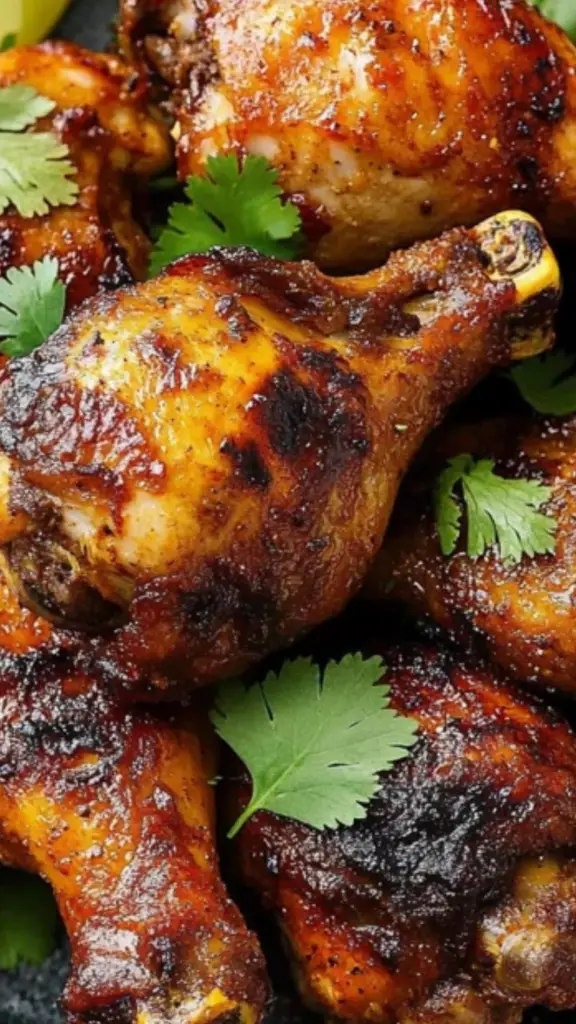
Serving Suggestions
Pollo Asado is a versatile dish that pairs well with a variety of sides and toppings:
- Tacos – Slice the chicken and serve it in warm tortillas with salsa, guacamole, and fresh onions.
- Burrito Bowls – Serve over rice with beans, roasted vegetables, and a drizzle of lime crema.
- Salads – Add sliced chicken to a bed of greens with avocado, tomatoes, and a light vinaigrette.
- Side Dishes – Serve with Mexican rice, grilled corn, or a simple cucumber and tomato salad.
Storing Leftovers
- Refrigeration – Store in an airtight container in the fridge for up to 4 days.
- Freezing – Freeze cooked chicken in an airtight container for up to 3 months. Thaw in the refrigerator before reheating.
- Reheating – Warm in a covered skillet over low heat or in the oven at 300°F until heated through.
Conclusion
Pollo Asado is the perfect beginner-friendly recipe that delivers incredible flavor with minimal effort. Whether you grill or roast it, the combination of citrus, spices, and achiote makes this dish stand out. Give this recipe a try, and don’t be afraid to experiment with different spices and side dishes. If you make it, share your experience and let us know your favorite way to enjoy Pollo Asado!





